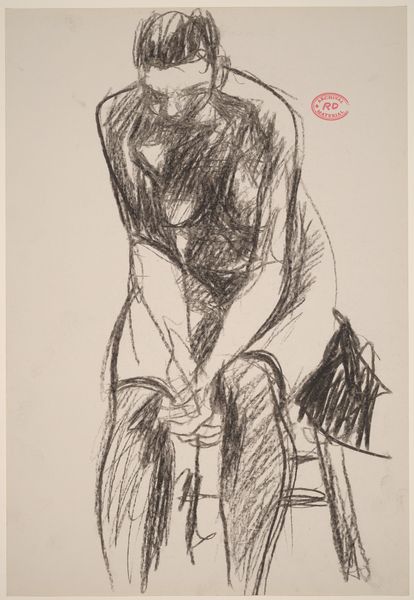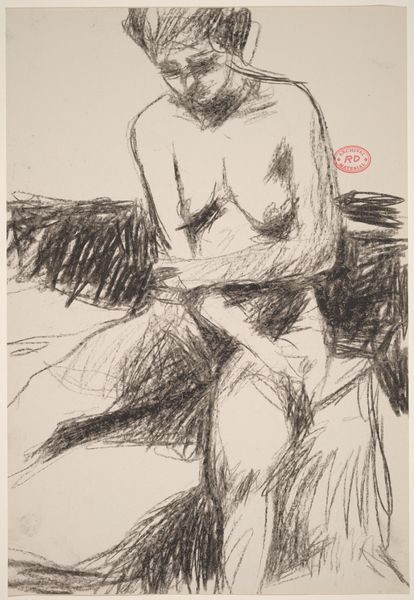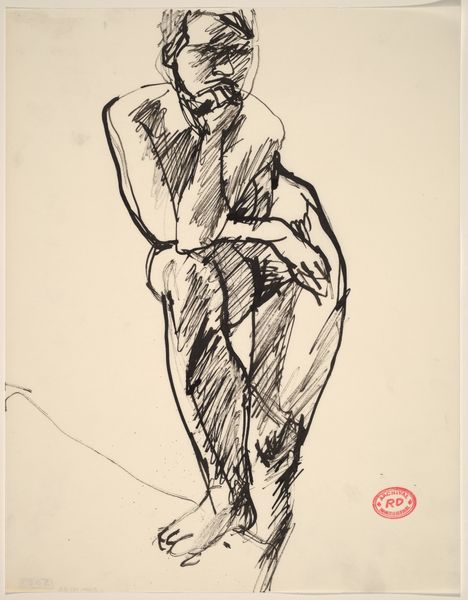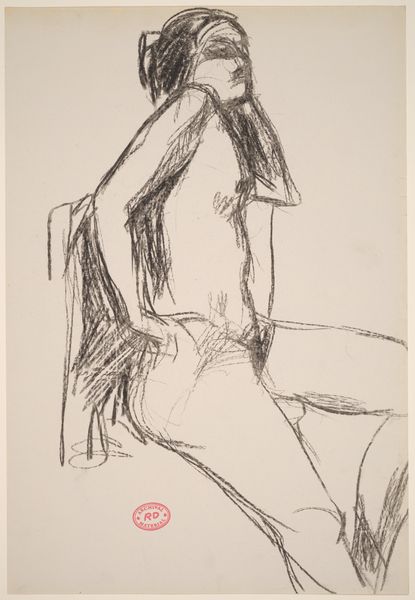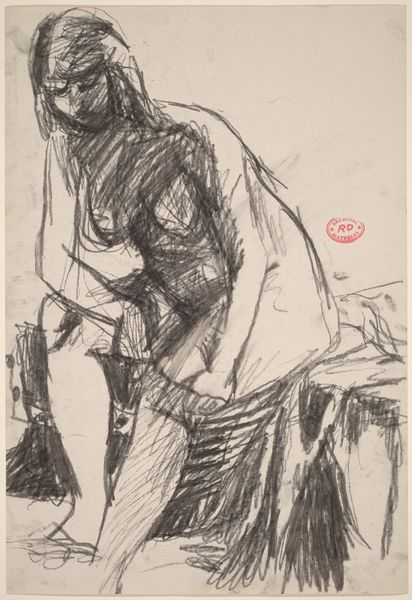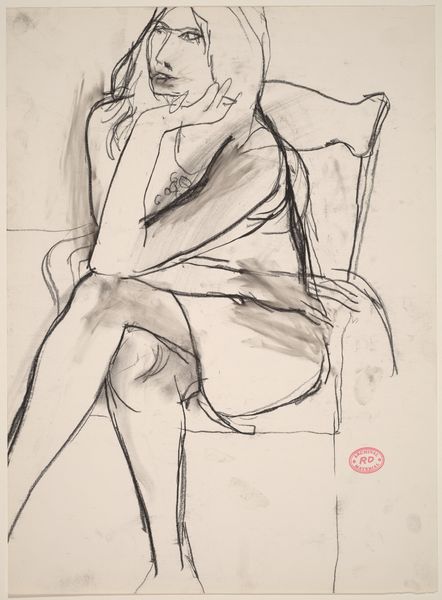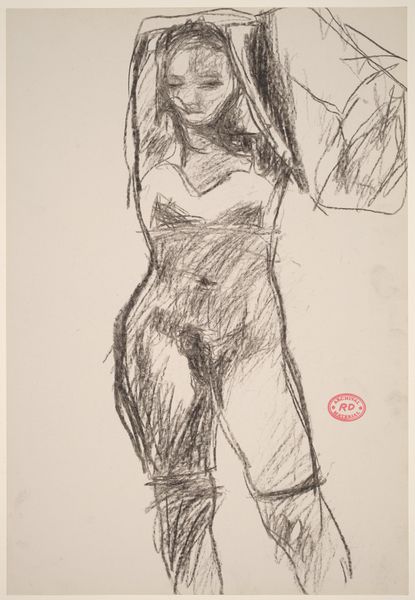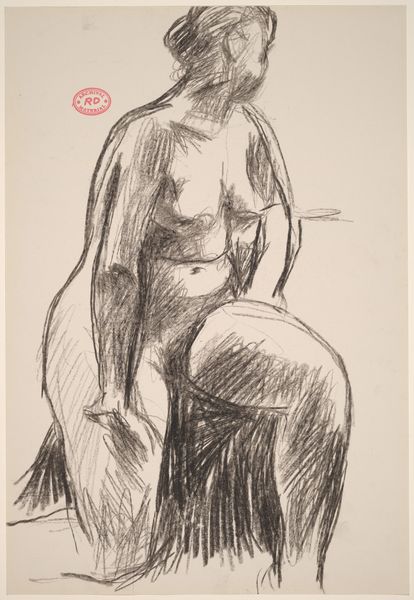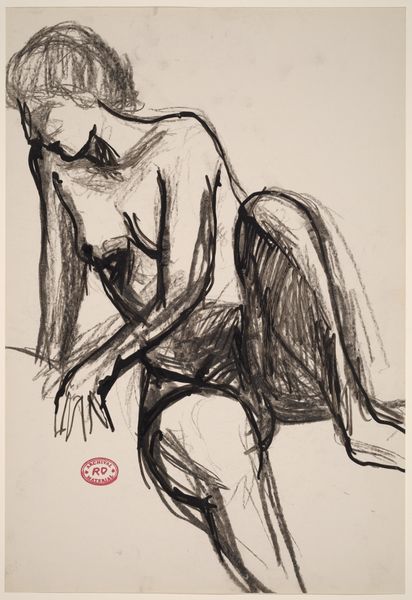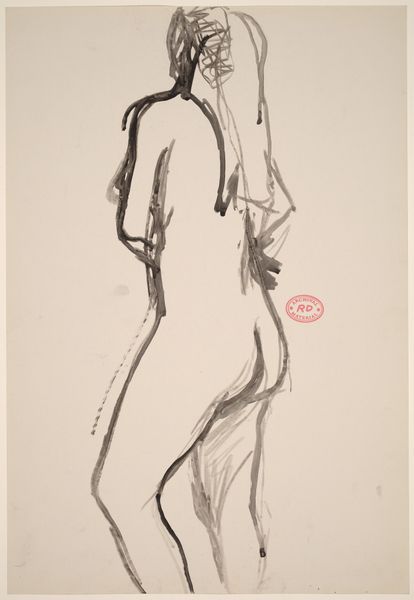![Untitled [seated woman in a dark coat] by Richard Diebenkorn](/_next/image?url=https%3A%2F%2Fd2w8kbdekdi1gv.cloudfront.net%2FeyJidWNrZXQiOiAiYXJ0ZXJhLWltYWdlcy1idWNrZXQiLCAia2V5IjogImFydHdvcmtzLzJhYzc1NmI3LWE1ZDYtNGM4YS04YzVhLTY3OGY4OTQ3NGE0ZC8yYWM3NTZiNy1hNWQ2LTRjOGEtOGM1YS02NzhmODk0NzRhNGRfZnVsbC5qcGciLCAiZWRpdHMiOiB7InJlc2l6ZSI6IHsid2lkdGgiOiAxOTIwLCAiaGVpZ2h0IjogMTkyMCwgImZpdCI6ICJpbnNpZGUifX19&w=3840&q=75)
drawing
#
drawing
#
amateur sketch
#
light pencil work
#
pencil sketch
#
personal sketchbook
#
bay-area-figurative-movement
#
pencil drawing
#
ink drawing experimentation
#
pen-ink sketch
#
arch
#
sketchbook drawing
#
portrait drawing
#
pencil work
Dimensions: overall: 40.6 x 27.8 cm (16 x 10 15/16 in.)
Copyright: National Gallery of Art: CC0 1.0
Curator: This drawing, rendered in pencil, comes to us from Richard Diebenkorn, dating roughly from 1955 to 1967. The title is simply, "Untitled [seated woman in a dark coat]." Editor: Immediately, I'm struck by the woman’s posture. The artist captured her slumped form with such immediacy. You can almost feel the weight of her mood in those loosely rendered lines. Curator: Right. This was a period where Diebenkorn, while deeply involved in abstract expressionism, was turning to figurative subjects. We need to see this drawing within his broader context, especially in relation to how other California artists were engaging with social realities at that time. Think of how women were depicted across different media—from advertising to fine art. Editor: Agreed, but for me, the formal qualities take center stage. Observe the dynamism of the line, the interplay between light and shadow created solely with pencil strokes. There’s a sense of incompleteness that almost enhances the expressive power. Curator: It makes me think about how Diebenkorn negotiates representation, and that’s very deliberate, wouldn't you agree? How did social norms shape even an unfinished portrait like this? Were there pressures, even unconscious ones, affecting how he chose to portray this woman? The very act of observing a woman then—and rendering it—was not neutral. Editor: Well, consider that his “unfinished” quality becomes part of a stylistic statement. This piece presents a visual language where the subject becomes secondary. Think about it: it becomes about the inherent qualities of mark-making. Curator: I appreciate your attention to the composition, truly. However, the artistic language itself carries social information and ideological perspectives. By overlooking that context, we may diminish the value of historical experience the work engages with. Editor: A fair point, of course, and maybe in understanding that, we truly appreciate the image more. Curator: Indeed.
Comments
No comments
Be the first to comment and join the conversation on the ultimate creative platform.
